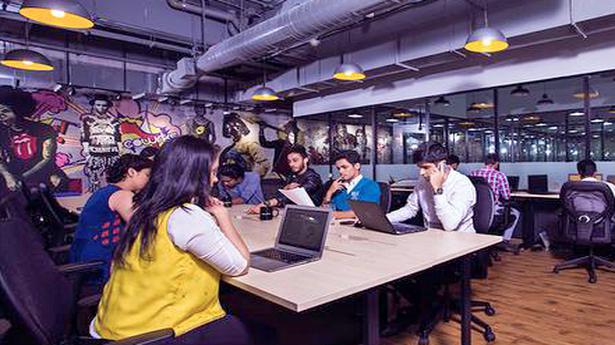
All for flexible workspaces
The Hindu
The growing number of startups and adoption of hybrid work model are causative factors, says Anshuman Magazine
Flexible workspaces, once considered a niche offering, has become an important part of building owners’ and corporate occupiers’ real estate strategies due to large-scale adoption of hybrid work model. Post the pandemic, the use of flexible spaces in commercial real estate portfolios is becoming more prominent in the long term. The flexible space stock in India is expected to grow from close to 29 million sq. ft. in 2020 by 28% y-o-y to touch 47-48 million sq. ft. by 2022.
The ‘startup’ effect
We are witnessing a startup boom in India (and globally). The startup ecosystem has created as many as 14 unicorns in the first three months of 2022, and for the third consecutive quarter, they have received over $10 billion across 334 funding deals. Early-stage startups often lack the requisite capital and credit-rating to rent traditional office spaces, which in turn made flexible workspaces popular. For the better part of the last decade, landlords discredited this large and growing share of the office market that the sector could potentially demand. Going back to 2019, exacerbating landlord problems, vacancies increased as businesses opted to downsize footprints – in hope of lowering operational costs and meeting the requirement for hybrid-work. Driven by this change and influenced by the ‘Startup’ culture, many landlords were challenged by a new breed of office providers who were willing to meet the growing demand for collaborative, amenitized, managed, scalable, and flexible office spaces.
Flexible workspaces provide startups the benefit of no upfront CAPEX, cost saving, operational outsourcing, data security, customisation & branding, and access to amenities which otherwise they would not have had in case of their own office set-ups. This forms a cost-effective solution for small/variable headcounts of early-age startups, allowing organisations to focus on improving operations through better collaboration & productivity. Also, enabling them to channelise their time and efforts on their core business. Flex workspaces also facilitate remote hiring from Tier-II and Tier-III cities, hub-and-spoke model within a city, co-working and remote-first models. Agility and flexibility will continue to be the pillars of startups across stages and the realty sector is all set to welcome this revolutionary change.
The perception shift
Landlords & developers, who until recently were not forthcoming in leasing spaces to startups owing to lower business viability, are now viewing startups from a different lens. They have now actioned to cater to the evolving market; a trend that is likely to drive growth within the office segment.
The increasing number of startups is creating avenues for more Flexible Workspace operators and Flexible Workspace supply. Increase in hiring and technology adoption is playing an important role in accelerating growth of flexible workspaces.

The crowning achievement of American inventor William Painter’s career was, well, inventing the now-ubiquitous crown bottle cap. Oh, and not to forget, the bottle cap lifter to open these crowns, or what we simply call the bottle openers. A.S.Ganesh tells you how Painter changed the bottling industry forever…










